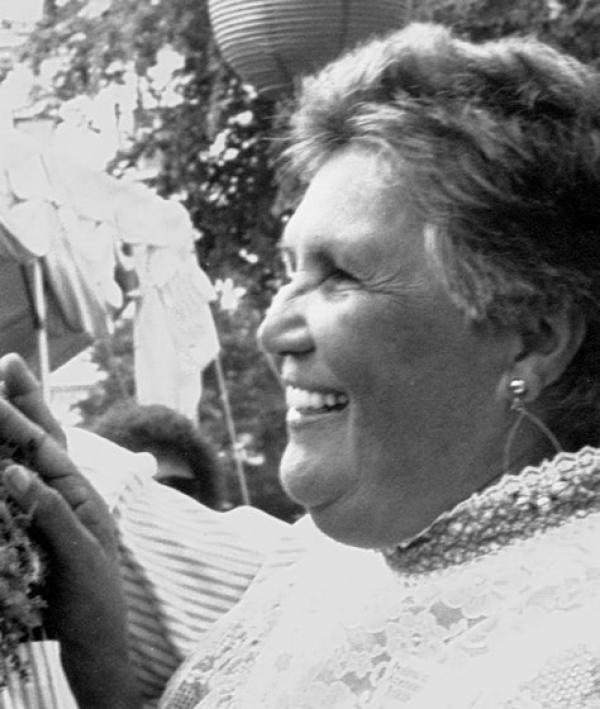Marie McDonald

Photo courtesy of the Ralph Rinzler Folklife Archives & Collections
Bio
Marie McDonald was born in 1926 and spent most of her childhood on the rural island of Molokai in the Hawaiian chain. She is descended from two great traditions: on her mother's side, the Mahoe line of Hawaiian chiefs; on her father's side, the distinguished Adams family of New England. She journeyed to Texas for her advanced education, earning a degree in art from Texas Woman's University in Denton. Since then, she has lived in Hawaii, where she has taught art to Hawaiian students for many years in the public schools. She also owns and operates the Honopua Flower Growers in Waimea, on the big island of Hawaii.
McDonald is not only the islands' best-known practitioner of the art of Hawaiian lei making, but she is also its primary scholar. Her research and documentation of the tradition in her 1985 book Ka Lei:The Leis of Hawaii is the authoritative source on the subject. After the book's publication, she conducted field research on lei traditions associated with Hawaiian ranching. She finally located a lei maker on Maui who could tell her about the leis once made of sisal fiber scraps — the lei malino. At her own ranch on the big island, she experiments regularly with raising older plants and flowers.
Hawaiian cowboys wear leis in parades and rodeos and at other times when the spirit moves them. Leis are used to welcome others, whether they be strangers or friends; to celebrate holidays, weddings, and birthdays; and to honor the dead. High school boys give their dates leis to match their dresses, and at graduation the students are piled "to the eyebrows" with leis, in McDonald's words.
There are a number of lei-making techniques. Hili is a simple braid of one material. Haku is the most difficult, in which the lei maker braids ferns or other leaves and mounts flowers into the plait. A thread of hibiscus bark or raffia binds a wili lei. A kipu'u lei is knotted, whereas a humupapa lei is sewn to a base of bark or fabric. Because Hawaii has a virtually seasonless climate, a variety of buds, blossoms, fruits, and leaves are available year-round. Because many native species are endangered, McDonald encourages her students to grow lei gardens. "Orchids, carnations, and other things, you can buy in the supermarket," she said.
Materials for traditional leis are actually chosen first for fragrance. Texture and the feel of the material against the wearer's skin are also considered. Movement is important for leis worn by hula dancers and for head leis. "They are very intriguing and graceful and enhance the beauty of men and women," McDonald said.
Least important is how long a lei will last. "Some Westerners have trouble understanding that the meaning of the lei is in the making and giving, perhaps because they live in such a plastic world," McDonald said. "The lei is an expression of love, affection, honor, and respect. It's the most beautiful thing I can make, from the most beautiful material at hand. As long as the lei is at its peak when I give it to you, it shows that I care."
Through her work as a resource specialist for the Department of Parks and Recreation, McDonald devoted many years to educating Hawaii's youth. She also worked as an art teacher in North Kohala, an isolated area on Hawaii. She has rarely turned down a request to provide leis and floral decorations for a special occasion. She also has consulted on displays and presented numerous demonstrations, both at home and on her extensive travels.

